WHY DO I NEED BSE?
Girls should be aware of how their breasts normally look (shape, color and size) and feel so that you can report any changes. Regular BSE will help with this. Doing BSE help you to detect changes or lumps that may cause cancer. However, finding a breast change or lump does not necessarily mean there is a cancer.
Do BSE every month, but not when you are menstruating because your breasts are least likely to be tender or swollen. You can do it a few days after your period ends.
CHANGES TO LOOK FOR!
Check with your health care provider if you find any change in your breast(s) that causes you concern. Changes in your breasts may include:
- Development of a lump
- A discharge other than breast milk
- Swelling of the breast
- Skin irritation or dimpling
- Nipple abnormalities (such as pain, redness, scaliness, or turning inward)
Step 1: Begin by looking at your breasts in the mirror with your shoulders straight and your arms on your hips. Here’s what you should look for:
- Breasts that are their usual size, shape, and color
- Breasts that are evenly shaped without distortion or swelling
If you see any of the following changes, bring them to your doctor’s attention:
- Dimpling, puckering, or bulging of the skin
- A nipple that has changed position or an inverted nipple (pushed inward instead of sticking out)
- Redness, soreness, rash, or swelling
Step 2: Now, raise your arms and look for the same changes
Step 3: While you’re at the mirror standing, place your right hand at the back of your head. Then, take your left hand with fingers flat to your right breast. Remember to keep your fingers flat and together throughout. Starting from the outer upper part of the breast, go in a circular motion with a firm smooth touch (from left to right and back to the upper part near your armpit). While you do this, press down a little bit but not too hard so that you can detect any lumps. At the nipple, press gently to look for any signs of fluid coming out of nipple (this could be a watery, milky, or yellow fluid or blood). Repeat this for the left breast by raising your left hand to the back of your head and then use your right hand for the circular motion and check for the same signs.
IN THE BATHROOM
You can also do step 3 in the bathroom. Water makes the skin wet and slippery and this reduces friction while you touch and feel your breast. Cover your entire breast, using the same hand movements described in step 3.
LYING DOWN
Step 4: Feel your breasts while lying down, placing a folded towel or pillow under your right shoulder and your right hand behind your head. Then examine your right breast with your left hand. With fingers flat, press gently in a circular motion (using a firm and smooth touch) starting from the outer upper part of your breast and then spiral towards the nipple (as described above). Check for the same signs. Cover the entire breast from top to bottom, side to side—from your collarbone to the top of your abdomen, and from your armpit to your cleavage. Repeat same for your left breast by placing the pillow behind your left shoulder and your left hand behind your head.
Disclaimer: This self- examine is not a substitute for periodic examinations by a qualified doctor.
WHAT IF YOU FIND A LUMP?
One of the most frightening moments for a girl is seeing or feeling something different or unusual while performing breast self-examination. One of the most important reasons to do regular breast self-examinations is so that you know what is normal for your breasts. If you find a lump, it is important not to panic. If you discover lumpiness in one breast or feel something “different” in the tissue, or if you feel a definite lump, there may be valid reason for concern, and it is important to contact a health care provider. Sometimes, the lumpiness may be due to menstrual changes, but if you have nipple discharge or skin changes such as dimpling or puckering, you may want to see your health care provider right away. It is natural to be frightened when discovering a lump, but do not let the prospect of cancer keep you from taking action. Remember that most breast lumps are benign (not cancerous).
Have fun while doing this!

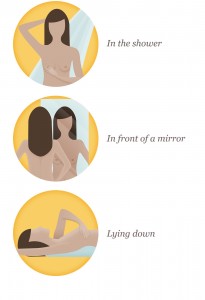
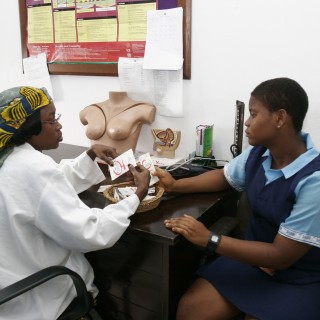
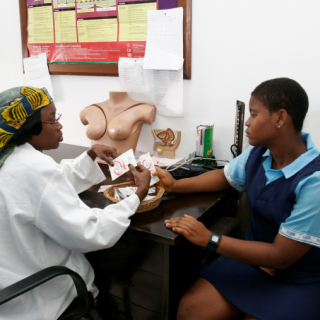

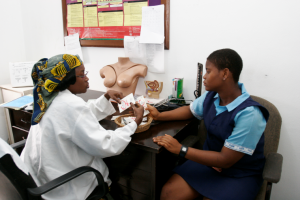
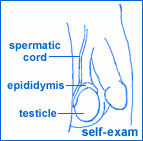
You must be logged in to post a comment.